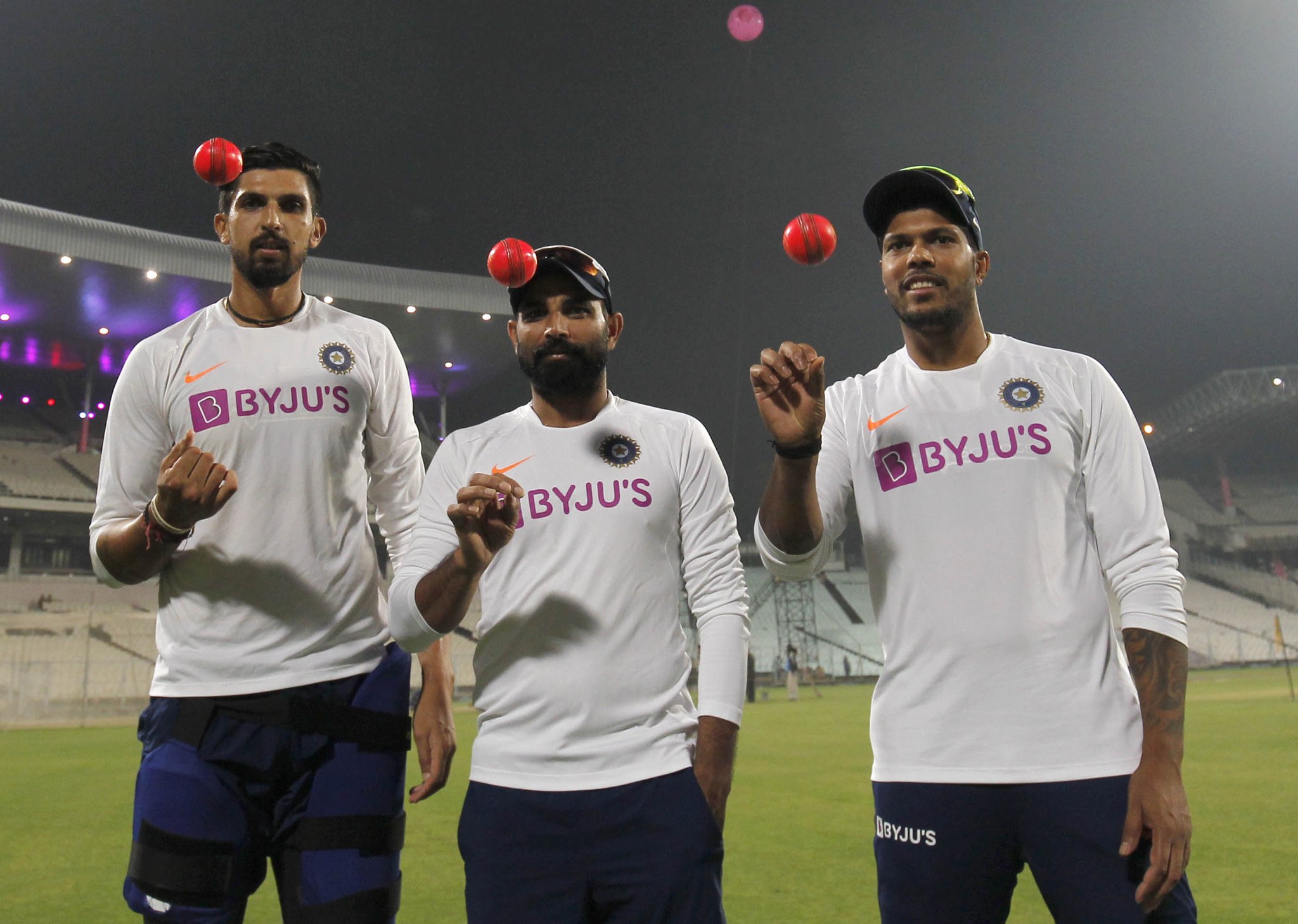A low down on Day/Night pink ball experiment in India
India are all set to take on Bangladesh in the first Day/Night Test match in India - at the Eden Gardens in Kolkata - something they had resisted for the longest time. Ahead of the historic encounter, here is everything that you need to know.

What is this ruckus behind this Pink Ball and D/N cricket?
The empty stands in Test matches all over the world have been a cause of concern for a long time now and something had to be done to bring back the longest format of the game to the public imagination. Thus the pink ball cricket and the concept of playing under lights. It would allow the fans to throng to the ground after finishing their office and catch a good amount of the game after wrapping up their day's work.
When did it first come to effect?
Although with the red ball, the first match under lights was played between Middlesex County Cricket Club and Arsenal Football Club at the Arsenal Stadium on 11 August 1952. However, in 1977, when Kerry Packer started a World Series Cricket in the form of “Super Tests”, the concept became popular and roughly 2,000 had attended the game between Australia and the West Indies. When Test cricket’s attendances started dwindling down, cricket started looking for alternatives and Day/Night Test came as the most viable option.
But why a Pink Ball?
It comes down to the fact that red ball is not clearly visible under lights, which meant a colour with radiative power had to be used. Pink covers the base and the extra coat of pigment and lacquer helps it maintain the colour for a long period of time.
How differently pink ball will behave as compared to the red ball?
Of course, there is a lot of difference. Firstly, there will be a lot of help for the pacers considering the fact grass would be left in order to not let the ball lose its colour. With the match happening in the evening, the Ganges breeze will have an impact as well. Pacers are set to rule the roost but spinners can get skid off the surface with Ravindra Jadeja’s straighter ones and Ravichandran Ashwin’s arm-ball will have a solid impact.
This will also mean, unlike red ball, the pink variants would show very little sign of reverse. Because of the extra coat of pigment and lacquer, it won’t lose its lustre because of which getting reverse swing will depend on the roughness of the ground. However, SG’s pronounced seam would also allow players like Mohammed Shami, Umesh Yadav, and Ebadat Hossain generate enough bounce off the surface, although that depends upon how much of rolling the surface has gone under.
Why India is so late to the party?
So far, there have been a total of 11 pink ball matches played at the international level with Australia being a part of as many as five pink ball matches. Australia wanted the 2018 Adelaide Test against India to be played with the pink ball, but the Board of Control for Cricket in India (BCCI) had refuted the idea at the time, citing the lack of familiarity. India hosted the 2016 Duleep Trophy under lights but the experiment hadn’t transferred to the Test level. However, when Sourav Ganguly was elected as the BCCI president, the writing was on the all, and now, here we are, on the verge of witnessing the first pink ball Test in India.
Does anyone have the experience of playing with Pink Ball?
Among the Indian cricketers, Rohit Sharma, Mayank Agarwal, Cheteshwar Pujara, Ravindra Jadeja, Wriddhiman Saha, Ishant Sharma, Kuldeep Yadav, Rishabh Pant, and Hanuma Vihari had played with the pink ball at some point of their career. While most of them played in the Duleep Trophy pink ball experiment, Saha and Shami had played in the CAB Super League final in Kolkata. Pujara and Agarwal came out with flying colours in the tournament - Pujara had scores of 166, 31, 256 in 2016 Duleep Trophy while Agarwal piled on a total of 419 runs from five innings with scores of 92, 161, 58, 57, 52 -- not a single score less than fifty in pink-ball cricket.

Comments
Sign up or log in to your account to leave comments and reactions
0 Comments